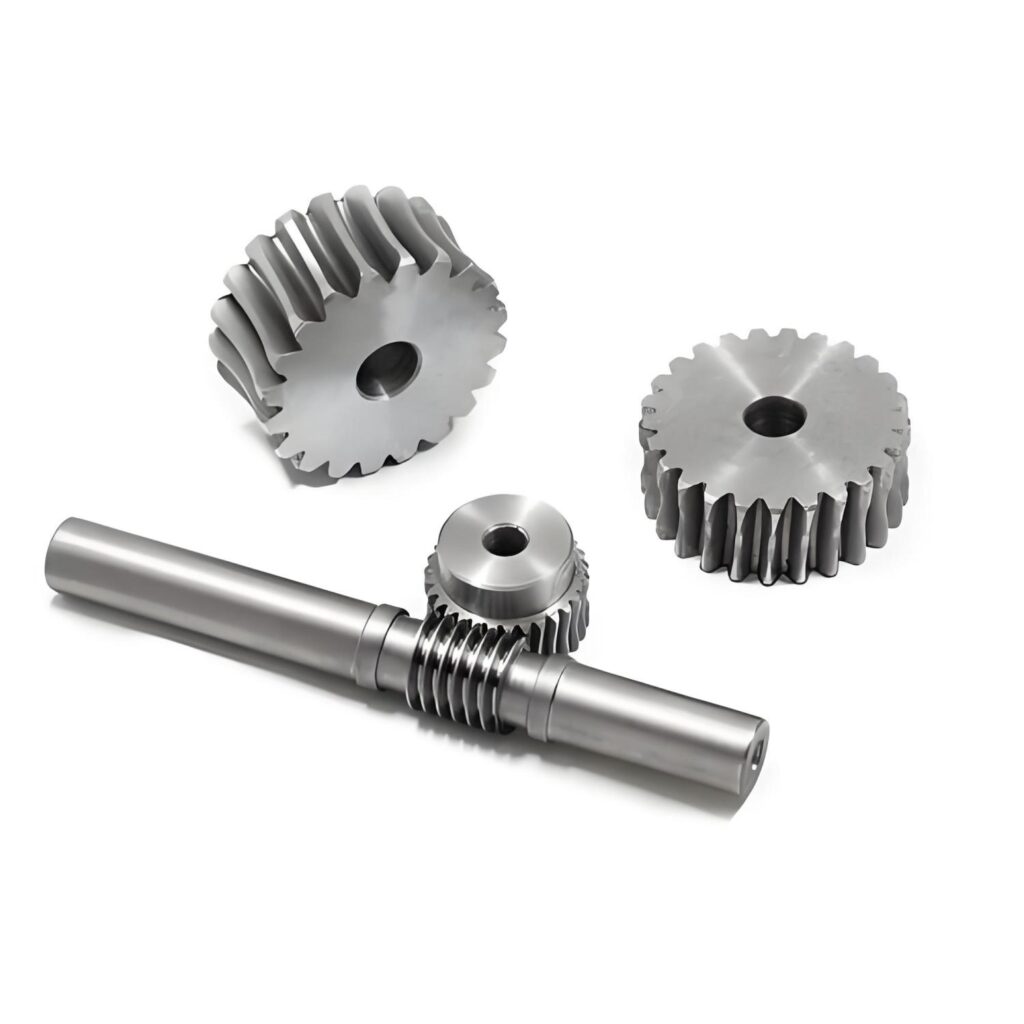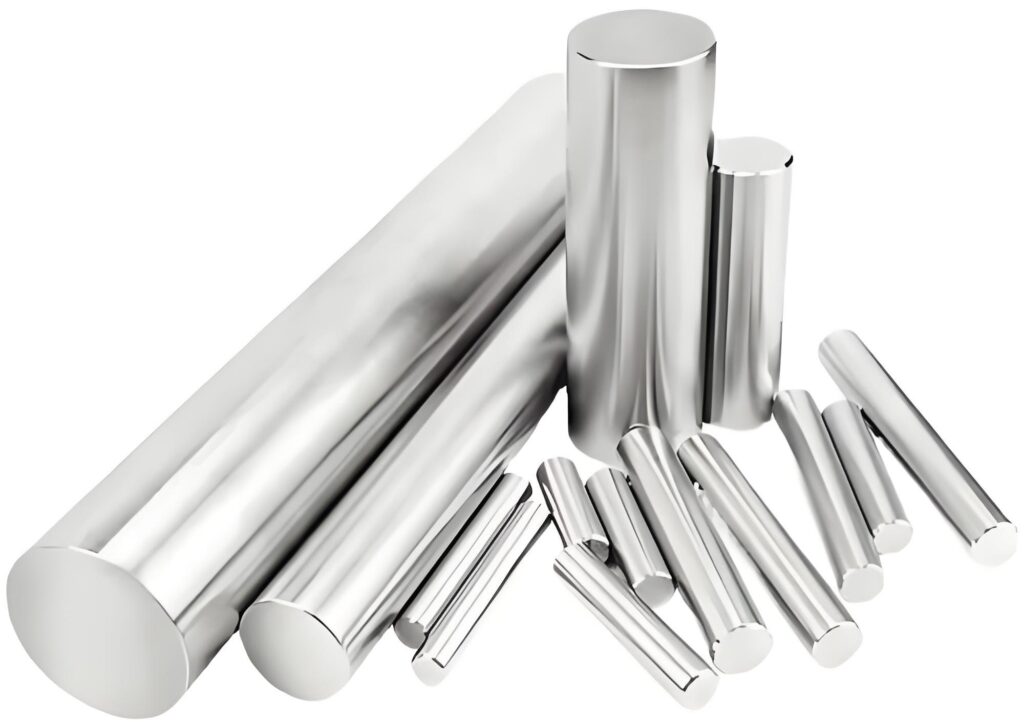Alloy steel is a cornerstone of modern manufacturing, valued for its versatility and strength in industries ranging from automotive to aerospace. This comprehensive guide, crafted by the team at Precionn, explores the fascinating world of alloy steel, diving into its composition, properties, production, grades, applications, and more. Whether you’re a professional in the machining industry or simply curious about this remarkable material, this blog offers a detailed look at what makes this material so essential.
What is Alloy Steel?
Alloy steel is a type of steel that has been enhanced with additional elements beyond the standard iron and carbon mixture found in plain carbon steel. These alloying elements, such as chromium, nickel, molybdenum, or vanadium, are added in varying proportions to improve specific properties like strength, durability, corrosion resistance, or heat resistance. The result is a material tailored to meet the demands of specific applications, from heavy-duty machinery to precision tools.
Unlike pure carbon steel, alloy steel’s composition allows it to perform under extreme conditions, making it a preferred choice in industries where reliability and performance are non-negotiable. For instance, alloy steel’s ability to withstand high temperatures and resist wear makes it ideal for components in turbines, engines, and cutting tools. Understanding this material begins with recognizing its role as a customizable, high-performance material that bridges the gap between standard steel and specialized applications.
Why Alloy Steel Matters
In the machining industry, materials must balance strength, flexibility, and cost-effectiveness. This material stands out because it can be engineered to meet precise requirements, offering manufacturers the ability to create components that are both robust and adaptable. Its widespread use underscores its importance in driving innovation and efficiency across various sectors.
Steel Alloy Composition: The Building Blocks
The composition of alloy steel is what sets it apart from other types of steel. While carbon steel primarily consists of iron and carbon, this material incorporates a range of alloying elements to enhance its properties. These elements are carefully selected and combined to achieve desired characteristics, such as increased hardness or improved corrosion resistance.
Common Alloying Elements
- Chromium: Enhances corrosion resistance and hardness, commonly used in stainless steel alloys.
- Nickel: Improves toughness and resistance to extreme temperatures, ideal for aerospace components.
- Molybdenum: Boosts strength and heat resistance, often found in tools and high-pressure applications.
- Vanadium: Increases strength and wear resistance, perfect for cutting tools and springs.
- Manganese: Enhances ductility and strength, contributing to the steel’s overall toughness.
Each element is added in specific percentages, typically ranging from 1% to 50%, depending on the desired outcome. Low-alloy steels contain smaller amounts of these elements (usually less than 8%), while high-alloy steels have higher concentrations, offering more pronounced enhancements.
Balancing Composition for Performance
The art of alloy steel production lies in balancing these elements to achieve the right combination of properties. For example, a steel alloy designed for high-temperature environments might include higher levels of molybdenum and nickel, while one intended for structural applications might prioritize manganese for added strength. This customization makes the steel a go-to material for precision machining, where exact specifications are critical.
Alloy Steel Properties: Strength and Versatility
Alloy steel’s properties are what make it a standout material in the machining world. By tweaking its composition, manufacturers can create steels with tailored characteristics to suit specific needs. Here are some of the key properties that define the steel:
Strength and Durability
Alloy steel is renowned for its exceptional strength, making it ideal for applications that require load-bearing capacity. The addition of elements like chromium and vanadium increases tensile strength, allowing the steel components to withstand heavy stress without deforming.
Corrosion Resistance
Thanks to elements like chromium and nickel, many alloy steels resist rust and corrosion, extending the lifespan of components exposed to harsh environments, such as marine or chemical processing settings.
Heat and Wear Resistance
Alloy steels designed for high-temperature applications, such as those used in jet engines or power plants, benefit from molybdenum and other heat-resistant elements. Similarly, vanadium enhances wear resistance, making this material ideal for tools that endure constant friction.
Machinability and Formability
While some alloy steels are harder to machine due to their increased hardness, others are formulated for better machinability, allowing for precise shaping and finishing. This balance is crucial in industries like automotive manufacturing, where components must meet exact tolerances.
Alloy Steel: How It’s Made
The production of alloy steel is a meticulous process that combines advanced metallurgy with precise engineering. The journey from raw materials to finished the steel involves several key steps, each designed to ensure the final product meets stringent quality standards.
Step 1: Melting and Alloying
The process begins with melting iron in a furnace, typically an electric arc furnace or basic oxygen furnace. Once molten, the desired alloying elements are added in precise quantities. The mixture is carefully monitored to ensure uniformity and consistency.
Step 2: Refining and Deoxidation
To remove impurities and achieve the desired chemical composition, the molten steel undergoes refining. Deoxidizers like aluminum or silicon are added to eliminate excess oxygen, which could weaken the final product.
Step 3: Casting and Forming
Once refined, the molten alloy steel is cast into ingots, slabs, or billets. These are then shaped through processes like rolling, forging, or extrusion, depending on the intended application. Hot rolling, for instance, is used to create sheets or bars, while forging produces stronger, more durable components.
Step 4: Heat Treatment
Heat treatment is a critical step in enhancing alloy steel’s properties. Processes like quenching, tempering, or annealing adjust the steel’s microstructure, improving its strength, hardness, or ductility. For example, quenching increases hardness, while tempering reduces brittleness, creating a balanced material.
Step 5: Finishing
The final stage involves surface treatments, such as polishing or coating, to enhance corrosion resistance or aesthetic appeal. Precision machining may also be applied to achieve tight tolerances for specific components.
This multi-step process ensures that alloy steel meets the exacting standards required for industries like aerospace, automotive, and energy.
What are Alloy Steel Grades?

Alloy steel grades are standardized classifications that define the composition and properties of specific alloy steels. These grades help manufacturers select the right material for their applications, ensuring consistency and reliability. Organizations like the American Iron and Steel Institute (AISI) and the Society of Automotive Engineers (SAE) establish these standards.
Common Alloy Steel Grades
- AISI 4140: A low-alloy steel with chromium and molybdenum, known for its strength and toughness. It’s widely used in automotive and aerospace components.
- AISI 4340: A high-strength steel with nickel, chromium, and molybdenum, ideal for heavy-duty applications like crankshafts and gears.
- AISI 52100: A high-carbon, chromium-alloy steel used in bearings due to its excellent wear resistance and hardness.
- AISI 8620: A low-alloy steel with good machinability, commonly used for gears and shafts.
Low-Alloy vs. High-Alloy Steels
Low-alloy steels, with less than 8% alloying elements, are cost-effective and versatile, used in pipelines, construction, and automotive parts. High-alloy steels, with higher alloy content, are designed for specialized applications, such as stainless steel for corrosion resistance or tool steel for cutting tools.
Each grade is tailored to specific needs, allowing manufacturers to choose the best material for their project’s requirements.
Alloy Steel Applications: Powering Industries

Alloy steel’s versatility makes it indispensable across a wide range of industries. Its ability to be customized for specific properties ensures it meets the demands of diverse applications, from heavy machinery to precision instruments.
Automotive Industry
In automotive manufacturing, alloy steel is used for components like axles, crankshafts, and gears. Its strength and durability ensure vehicles can handle the stresses of daily use, while its machinability allows for precise production of complex parts.
Aerospace and Defense
Alloy steel’s high strength-to-weight ratio and heat resistance make it a staple in aerospace. Turbine blades, landing gear, and structural components often rely on the steel to withstand extreme conditions.
Energy Sector
In power generation, alloy steel is used in turbines, boilers, and pipelines. Its ability to resist high temperatures and corrosion ensures reliable performance in demanding environments like nuclear or fossil fuel plants.
Tooling and Machinery
Alloy steel’s hardness and wear resistance make it ideal for cutting tools, dies, and molds. High-speed steels, a type of alloy steel, are commonly used in drills and saw blades for their ability to maintain sharpness under intense friction.
Construction and Infrastructure
From bridges to skyscrapers, alloy steel provides the strength and durability needed for structural components. Its corrosion resistance also makes it suitable for outdoor applications exposed to the elements.
Advantages and Disadvantages of Alloy Steel
Like any material, alloy steel has its strengths and limitations. Understanding these can help manufacturers make informed decisions about when and how to use it.
Advantages of Alloy Steel
- Enhanced Strength: Alloy steel’s superior tensile strength makes it ideal for heavy-duty applications.
- Customizability: The ability to tailor its composition allows for precise control over properties like hardness or corrosion resistance.
- Versatility: Alloy steel’s wide range of grades and applications makes it suitable for diverse industries.
- Durability: Its resistance to wear, corrosion, and heat extends the lifespan of components, reducing maintenance costs.
Disadvantages of Alloy Steel
- Cost: The addition of alloying elements and complex production processes can make alloy steel more expensive than carbon steel.
- Machining Challenges: High-strength alloy steels can be difficult to machine, requiring specialized tools and expertise.
- Weight: Some alloy steels are heavier than alternatives like aluminum, which may be a drawback in weight-sensitive applications.
- Brittleness: Certain high-alloy steels can become brittle if not properly heat-treated, leading to potential failures under stress.
By weighing these pros and cons, manufacturers can determine whether the steel is the right choice for their specific needs.
Alloy Steel in the Future
As industries continue to evolve, alloy steel remains at the forefront of innovation. Advances in metallurgy are leading to the development of new steel grades with enhanced properties, such as improved sustainability or recyclability. For example, researchers are exploring ways to reduce the environmental impact of steel production by using greener manufacturing processes or incorporating recycled materials.
In the machining industry, this material’s role is expanding as manufacturers demand materials that can handle increasingly complex applications. From electric vehicle components to renewable energy infrastructure, the steel is poised to play a critical role in shaping the future of manufacturing.
Precionn’s Commitment to Alloy Steel Excellence
At Precionn, alloy steel is more than just a material—it’s a key part of our mission to deliver precision-engineered solutions to our clients. As a leader in the machining industry, Precionn leverages the unique properties of this material to create high-quality components that meet the exacting standards of industries like automotive, aerospace, and energy. Our state-of-the-art facilities and expert team ensure that every alloy steel part we produce is crafted with precision and care.
Whether you’re looking for custom alloy steel components or expert guidance on material selection, Precionn is here to help. Visit our website to learn more about our capabilities and how we can support your next project with top-tier machining solutions.




